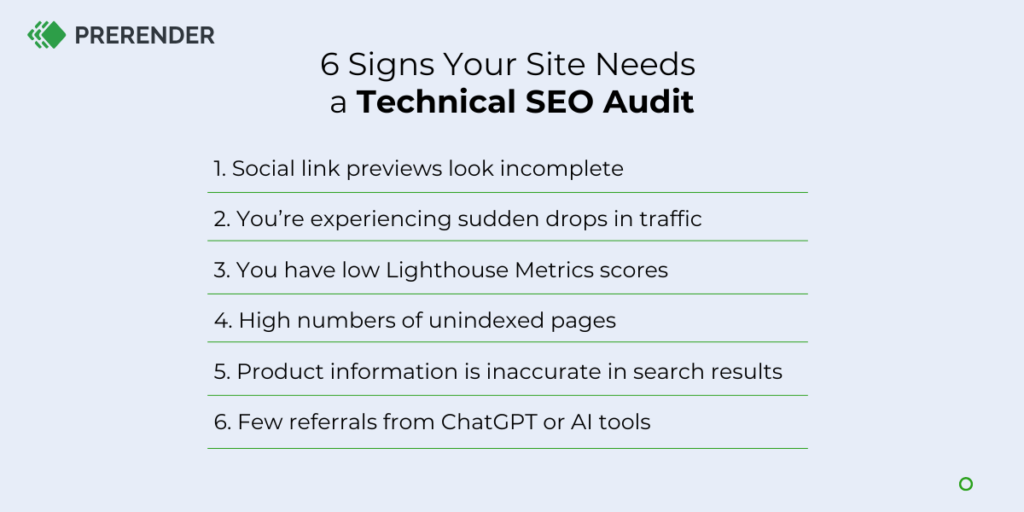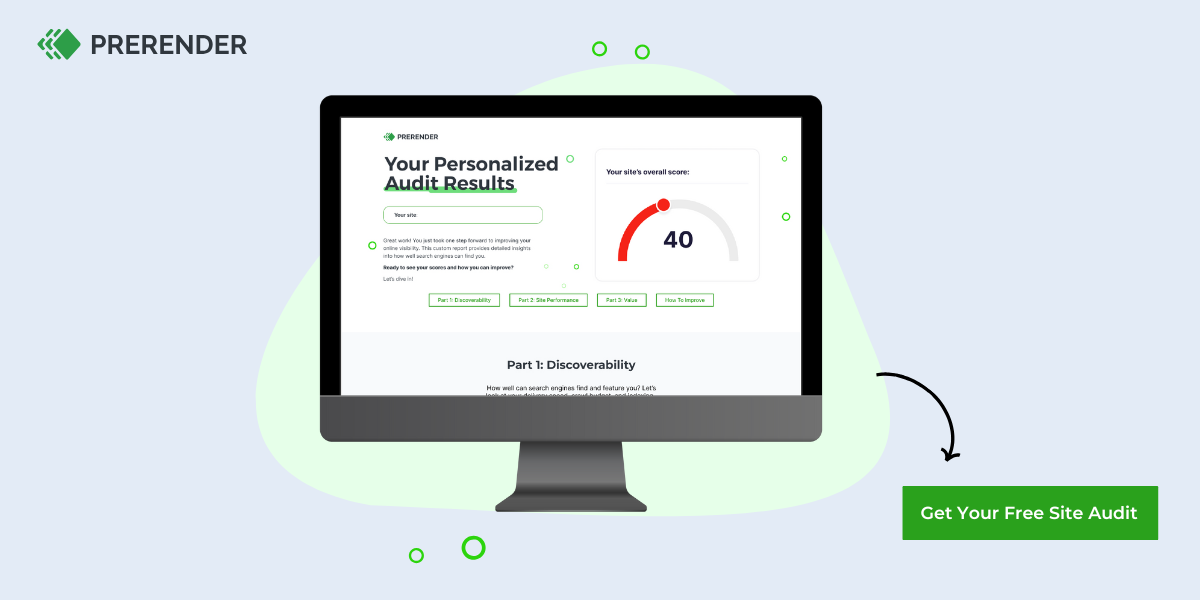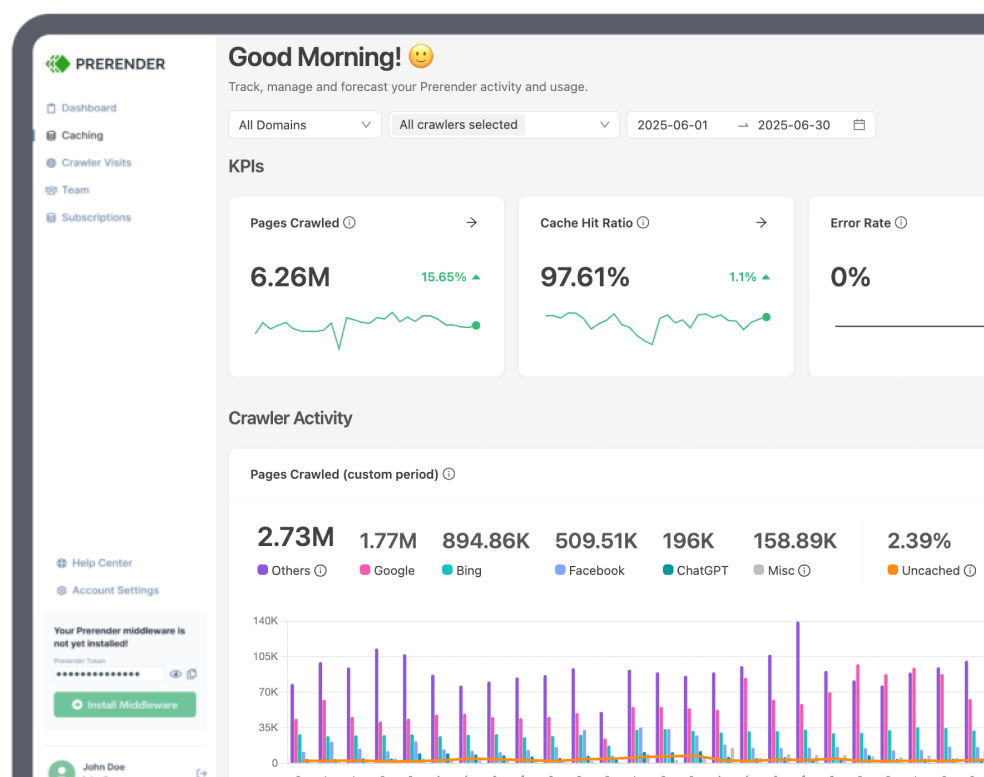If your content is hard to process by crawlers from Google or ChatGPT, your important information may be invisible to your audience.
But it’s not always obvious to know if your content is “hard to process” by crawlers.
Here are some indicators that your content may be invisible to search engines, and how a free site audit tool can help identify what to do about it. Read on for details.
6 Signs That You Need a Site Audit
1. Your Social Media Previews Look Broken
When you share your website on social media, those preview cards should display clean, professional snippets of your content—like in the image below.
But if you’re seeing blank previews, missing images, or incorrect information, it’s more than just a social media problem: it’s often a sign of deeper technical issues.
These broken previews typically occur because social platforms can’t properly read your site’s content, especially if you’re using modern websites with JavaScript. And if social media crawlers can’t see your content, search engines and AI tools probably can’t either.
This visibility issue doesn’t just affect your social sharing—it could be hurting your search performance and traffic across the board.
Is this technical SEO issue happening to you? Check out our detailed guide on how to fix broken social sharing link previews.

2. You Experience Sudden Drops in Traffic
It’s easy to blame Google’s latest algorithm update when your traffic takes a nosedive. But sudden traffic drops often point to technical issues hiding beneath the surface—especially if the decline doesn’t match industry trends or seasonal patterns.
These unexpected drops frequently occur after website updates, framework changes, or new feature launches. While your site might look and function perfectly for users, technical issues could be preventing search engines from properly accessing or understanding your content.
The good news? Most technical issues causing traffic drops can be identified and fixed, but the longer they go unnoticed, the more business you’re missing out on.
3. Low Core Web Vitals Scores
When your Core Web Vitals scores are in the red, it’s not just about slow loading times. Poor scores often reveal deeper technical issues affecting both user experience and search engine crawling. While visitors might wait those extra seconds for your page to load, search engines are less patient.
Low scores—particularly on mobile devices—typically signal problems with JavaScript execution, render-blocking resources, or inefficient code. And since Google now prioritizes fast-loading sites (especially for mobile searches) these performance issues directly impact your rankings.
4. High Numbers of Unindexed Pages
When Google Search Console shows a high number of unindexed pages, you’re missing out on serious opportunities to reach new audiences.
This common issue often indicates that search engines are struggling to process your content, even though a page might look perfect to human visitors. It typically affects JavaScript-heavy sites where content loads dynamically (such as product pages, pricing information, and real-time updates).
Even though users see your full content, search engines might only see blank or incomplete pages. The result? Your valuable content is invisible in search results, even though potential customers might be searching for exactly what you offer.
5. Your Products Reflect Outdated Information in Search Results
When your products appear in search results with missing prices, outdated information, or incomplete descriptions, you’re missing out on major revenue opportunities. This issue is particularly costly for ecommerce sites, where accurate search previews directly impact click-through rates and sales.
The problem often lies in how search engines see your dynamically loaded content. While customers on your site might see current prices, inventory status, and detailed descriptions, search engines could be stuck looking at outdated or partial information, which causes poor user experience. Your customers see a product for one price in search results, but when they land on your site, they see that the price has changed or the product is gone, leading to a frustrated user and potentially higher bounce rates.
Not only that, this disconnect also actively costs you lost sales. If your product information was right in the first place, there’s a much higher chance the customer would buy from you.
6. Few Referrals from ChatGPT, Perplexity, Claude or Other LLMs
If you aren’t seeing many referrals in your tracking database from AI tools like ChatGPT, Perplexity, and more, there may be a bigger problem at play.
Currently, major AI crawlers can’t render JavaScript. Put simply: if your site uses JavaScript—most websites do—you may be invisible to AI search engines. AI crawlers now make up about 30% of all web crawling traffic, and millions of users are discovering websites through AI recommendations. But if these AI tools can’t see your content, they can’t recommend your site in their responses.

Ultimately, each of these warning signs suggests that larger challenges are at play. By conducting a quick site audit, you can easily understand what’s happening behind the scenes. You’ll get clear, measurable insights into how your site scores and what your potential scores could be—before these warning signs seriously hinder your bottom line.
The Problem With Most Audit Tools
Unfortunately, most technical SEO audits are hard to understand for the everyday marketer. They’re complex, overwhelming, and usually contain way too much information that the average person doesn’t know what to do with or how to action.
Other issues with most technical SEO audit tools:
- Credit card information required
- Have to book a demo to see the results
- Overly technical and complex
- You can’t compare against industry benchmarks
- You don’t have a clear idea of what your potential could be
- Have to enter in too much personal information
With Prerender.io’s free site audit tool, in just a few minutes, you’ll easily grasp how well search engines can access your content—no need to provide your credit card information, book a demo, or navigate overly technical content. These results will give you a visible benchmark on how you’re doing and where to go.
What Prerender.io’s Free Site Audit Tool Evaluates
The site audit from Prerender.io explores a few core areas of your website. Keeping it simple, easy-to-understand, and scannable, it gives you insights into:
- How well search engines can access your site
- Your technical performance and PageSpeed Insights metrics
- And your ROI potential—this last point is especially helpful if you’re an ecommerce site.
Let’s break each of these sections down.
How Discoverable Is Your Site?
Prerender.io looks at how well search engines can find, understand, and process your website:
- How quickly can search engines access your pages?
- Are search engines efficiently reading your pages, or is there room for improvement?
- Are your pages being indexed properly?
Why this matters: If search engines can’t find or understand your content, your potential customers can’t either. This means missed business opportunities, less traffic overall, and fewer sales.
How Fast Is Your Website for Crawlers?
Prerender.io also evaluates your site’s speed and user experience:
- How quickly do your pages load for crawlers?
- Does your site work well on mobile?
- How does your site compare on mobile versus desktop?
Why this matters: Google prefers fast sites—and especially on mobile. If you’re struggling to improve your mobile PageSpeed Insights scores, an audit can be particularly helpful to see where you can improve. The audit gives you a quick glance at how you’re doing on mobile versus desktop and where you can go from there.

What ROI Potential Am I Missing Out On?
Lastly, the report ties in with what all business owners care about: ROI. Ultimately, any business needs to see the economic value of its efforts. That’s why the Prerender.io reporting feature also includes the unique element of revenue potential.
- Is your site losing money due to technical issues?
- What could your revenue be if those technical issues were fixed?
Why this matters: Technical problems can silently hurt your business by reducing visibility and turning away potential customers. This element of the report helps tie in the metrics that all businesses prioritize most.
Why Use Prerender.io’s Site Audit Tool?
As previously mentioned, most site audit tools are overly technical and have barriers to accessing them. We created our site audit solution with this feedback in mind.
Here are a few reasons to try Prerender.io’s free audit tool:
- It’s a short, digestible technical report that’s easy for the average marketer to understand
- It pulls out high-level information for you to quickly glance at your site’s performance
- There aren’t any barriers to seeing results—no need to enter your credit card information or book a demo
- It’s completely free!
Simply enter your domain and email. After that, we’ll email you a downloadable link with your scores and you can review it on your own time.

Get Your Free Site Audit Today
Ready to see how your site stacks up in search? Get your free site audit results today!
FAQs
How Do I Know If I Need a Site Audit?
You might need a site audit if you’re experiencing issues like:
- Social media link previews look broken or incomplete
- Frequent sudden drops in traffic
- Low PageSpeed Insights scores
- High numbers of unindexed pages
- Product prices, inventory, reviews, images, and more look incomplete or inaccurate in search results
- Few referrals from LLMs like ChatGPT
- Slow-loading pages
- Drops in rankings
- Declining search traffic
How Often Should I Audit My Site?
Regular audits are recommended frequently, such as:
- After major site updates
- When implementing new JavaScript features
- Quarterly for large sites
- When traffic unexpectedly drops
- Before planned migrations
What Does Prerender.io Do?
Prerender is a technical SEO solution that helps brands improve their online discoverability. We solve your hidden technical issues behind the scenes, so you can fix your indexing issues, improve how your products look in SERPs, optimize your link previews, and more. Here’s a video to learn more.
Further Reading:



